Nature Rambles: Key to Kew
There were only two hours of an extended lunch for me to see the Botanic Gardens of Kew and half an hour of that was taken up by mini sandwiches and Puro coffee, a free trade partner of the World Land Trust. Having been so many years to London and not having walked in the Kew is like having gone several times to Mecca and not having walked around the Kaaba. If you were Muslim, that is.
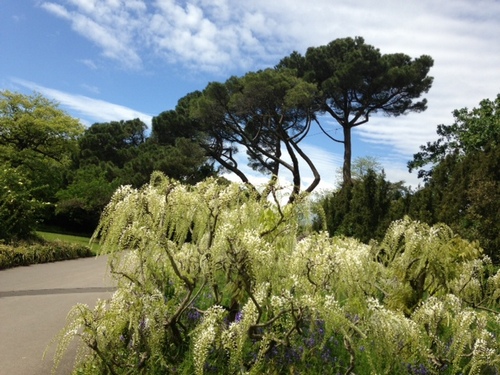 Kew gardens- a collection of the exotic and the commonplace. Here the wisteria blooms
Kew gardens- a collection of the exotic and the commonplace. Here the wisteria blooms
against a brooding stone pine. Photo: Vivek Menon / WTI
It was raining slightly and I did not have a camera, but neither dampened the desire to see what Sir Ghillean Prance, a former director and botanist of great note and I had talked about just a few minutes before. At display was the enormously vast collection of the rare, the impressive and the important at Kew; a collection that defined the botanical world that we lived in. I stepped out into the rain, a small Venezuelan chocolate which had an ant pitta on the cover, in my mouth and took to recording on my iPhone what I could take in in a short walk. It was short but let me describe it using three sights to take in the vastness of the green.
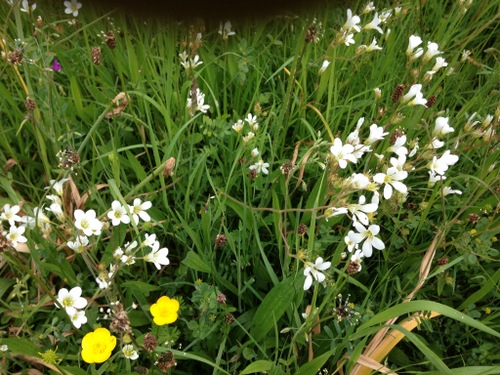 Meadow saxifrages (white flowers) grow in an abundance of meadow blooms in the seemingly carelessly growing, but carefully tended, side banks at Kew. Their conservation is one of Kews success stories.
Meadow saxifrages (white flowers) grow in an abundance of meadow blooms in the seemingly carelessly growing, but carefully tended, side banks at Kew. Their conservation is one of Kews success stories.
Photo: Vivek Menon / WTI
First, the meadow blooms; the daffodils, the meadow saxifrage and the wild clary. All three are quintessential English flowers written about and glorified by poet and wanderer. Whilst for the local at Kew, gawking at Oriental species must be exotic and eye catching, the British endemics and iconics were a definitive draw for me.
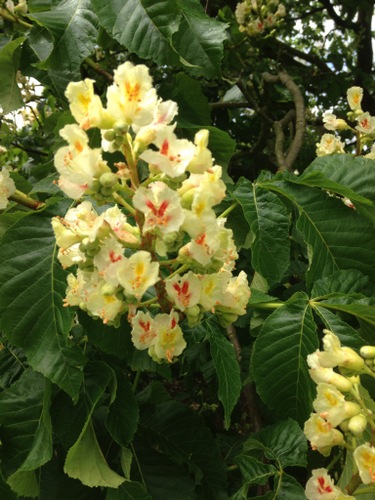 The horse chestnut flowers, delicate blooms amidst a vast and sprawling tree. Photo: Vivek Menon / WTI
The horse chestnut flowers, delicate blooms amidst a vast and sprawling tree. Photo: Vivek Menon / WTI
What beautiful meadows Kew had recreated such that must have once overflowed the banks of the Thames (today concreted and full of upscale bars and waterfront developments). What Blake and Keats and Shelley would have to do to take in the wonders of the London countryside while sitting at a watering hole near the Tower Bridge? They would probably just have to take the District and Circle line to Kew Gardens to recreate their medieval inspirations, no doubt.
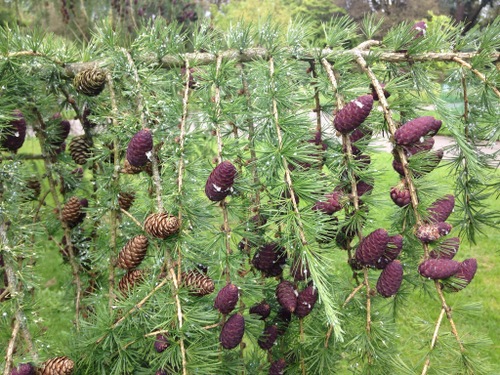 The European larch (Laryx) with its cones, freshly violet and dried out form interesting
The European larch (Laryx) with its cones, freshly violet and dried out form interesting
decorations to the confer bough. Photo: Vivek Menon / WTI
Then, the trees, massive specimens from around the world. Take for example the conifers and there are a number of fine specimens at the Kew, the larch the spruce, the black or Corsican pine, the yew, the stone pine, all massive trees, some of the best of their kinds, arching their ancient backs over the well- kept grass. There would be no forest if there were no trees and in a botanical garden as well, the smaller denizens were kept in check by the behemoths.
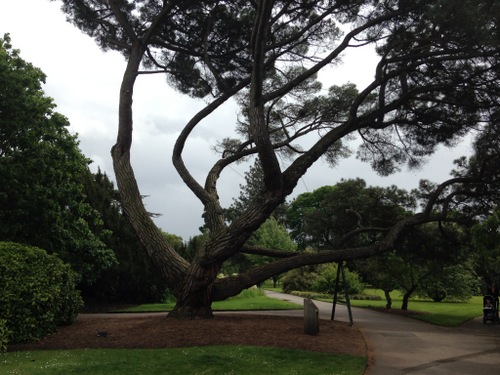 A stone pine planted in 1846 is a Mediterranean plant grown for its pine nuts.
A stone pine planted in 1846 is a Mediterranean plant grown for its pine nuts.
Today this is one of the heritage trees at Kew. Photo: Vivek Menon / WTI
They spelt symmetry, outlined the horizons and wrapped the soil in their grasp. Under their gaze, the rest of the collection blossomed. Under their boughs, hot and spent wanderers rested, some with children in prams, others with their companions. Large pigeons and speckled starlings played in their shadows picking at the turf as they pranced around. And standing under the props and iron bands that kept an ancient specimen upright, a heritage tree, no doubt, I looked out at another strange sight.
A heritage black locust tree planted in the 1700s is a classic of tree preservation. Note the iron
bands on it to prevent further decay. Photo: Vivek Menon / WTI
At first I thought they were astronauts or nuclear warhead removal specialists in their white suits poring over what must have been disabled mines or space rocks, no doubt. On closer look, the two space rocks turned out to be apiary boxes and the astronauts were two young English beekeepers checking out their Apis melliflora. I talked to them of Apis dorsata in India, the wild rock bee. And of the living bio fence we were creating from bee hives and chilly groves and citrus plants, a three in one elephant proof and cash providing fence for the small landholders of India. They were fascinated or perhaps just polite but appearing fascinated as per British protocol. But, I hoped my exotic tale was as fascinating to them as was the story of how the last wild clary seed was saved at the Kew and instead of adding to the vast extinctions of our times, how this meadow plant was kept alive by what is undoubtedly one of the greatest institutions that the Kingdom of Plants and Fungi would ever have wanted as their saviour.
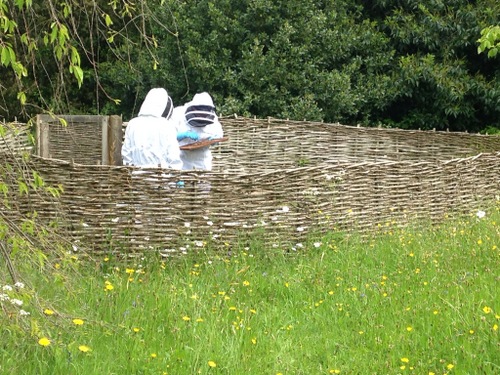 One in three British beehives had died out due to a mite a few years ago. These Apis melliflora bees
One in three British beehives had died out due to a mite a few years ago. These Apis melliflora bees
are being tended to by beekepers at Kew. Photo: Vivek Menon / WTI





